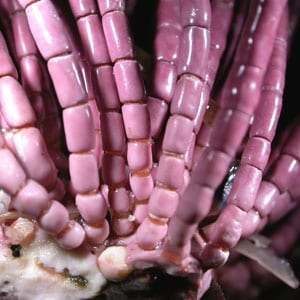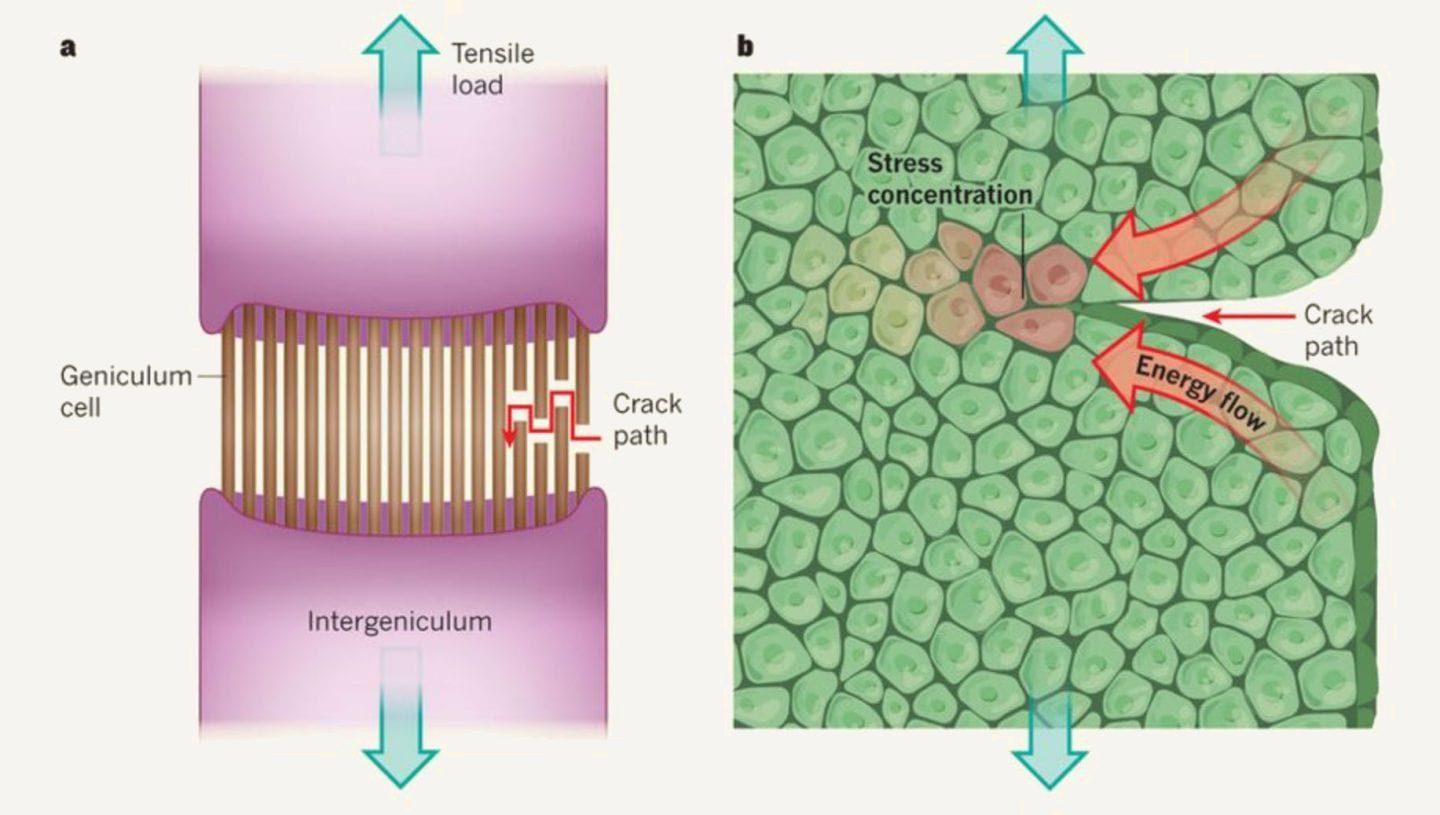Genicular joints in the fronds of coralline macroalgae provide flexibility and minimize tension due to segmentation.
“Previous studies have demonstrated that fleshy seaweeds resist wave-induced drag forces in part by being flexible. Flexibility allows fronds to ‘go with the flow’, reconfiguring into streamlined shapes and reducing frond area projected into flow. This paradigm extends even to articulated coralline algae, which produce calcified fronds that are flexible only because they have distinct joints (genicula). The evolution of flexibility through genicula was a major event that allowed articulated coralline algae to grow elaborate erect fronds in wave-exposed habitats. Here we describe the mechanics of genicula in the articulated coralline Calliarthron and demonstrate how segmentation affects bending performance and amplifies bending stresses within genicula. A numerical model successfully predicted deflections of articulated fronds by assuming genicula to be assemblages of cables connecting adjacent calcified segments (intergenicula). By varying the dimensions of genicula in the model, we predicted the optimal genicular morphology that maximizes flexibility while minimizing stress amplification. Morphological dimensions of genicula most prone to bending stresses (i.e. genicula near the base of fronds) match model predictions.”(Martone and Denny 2010: 3421)







